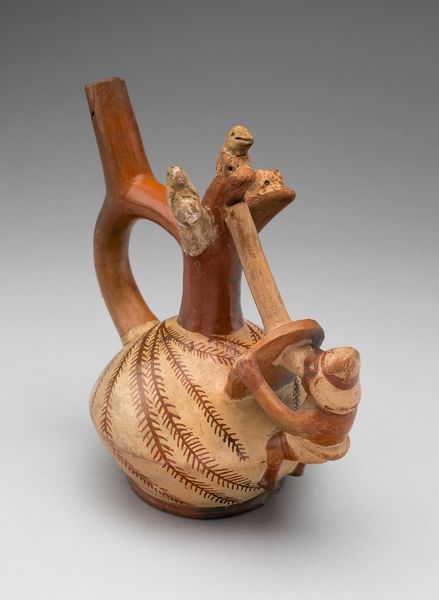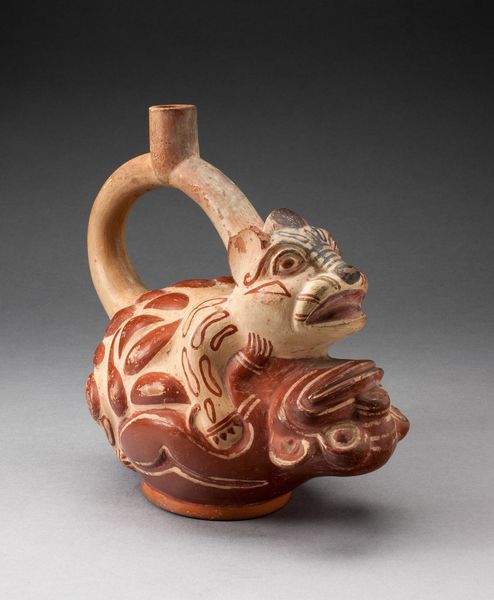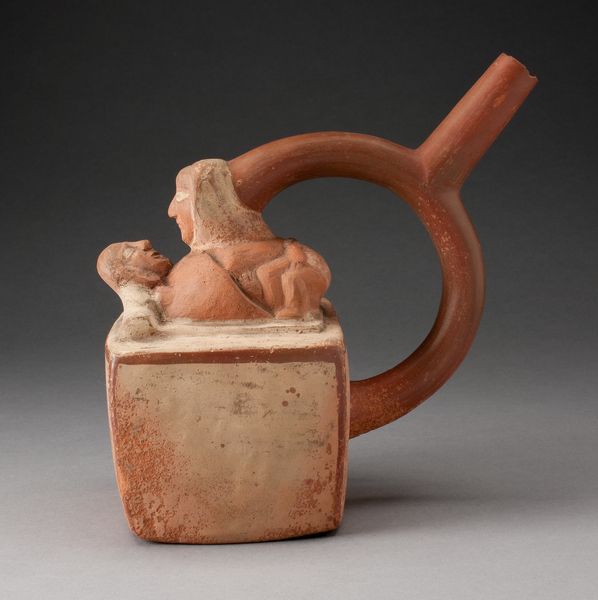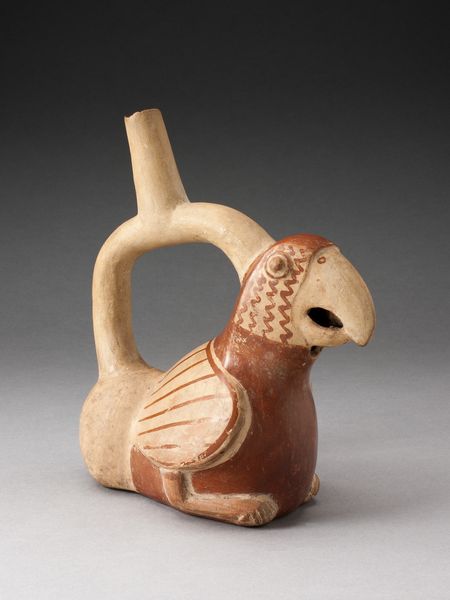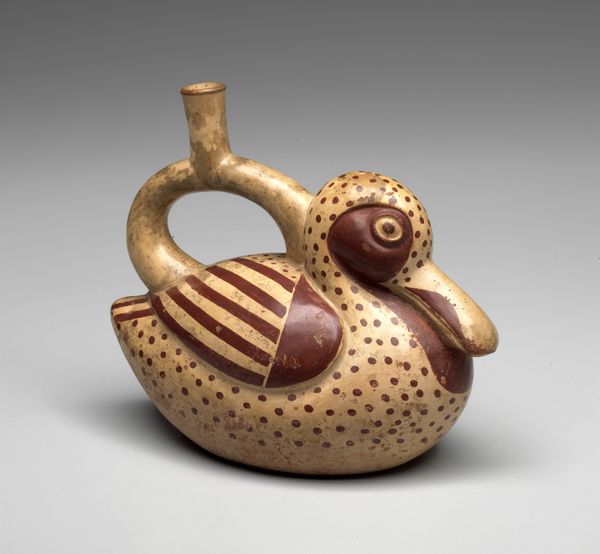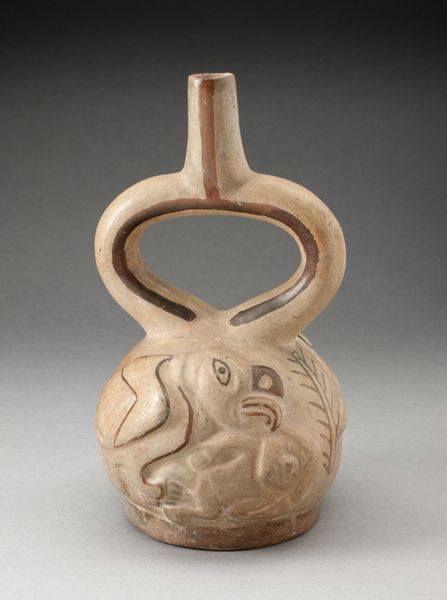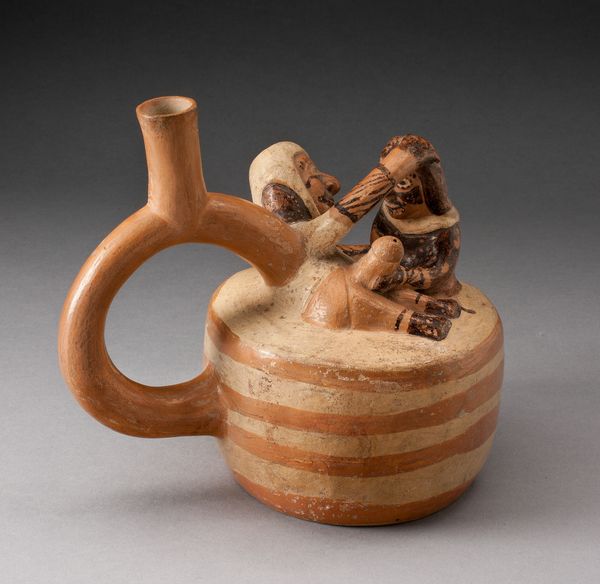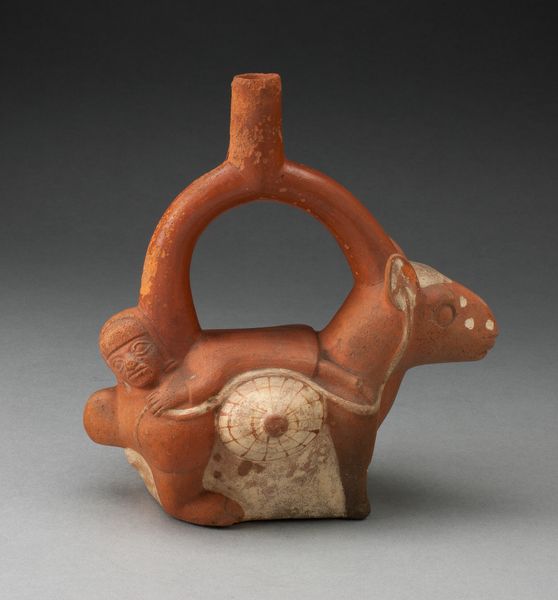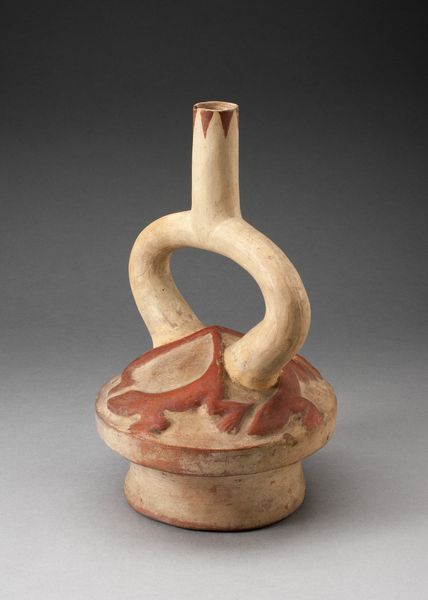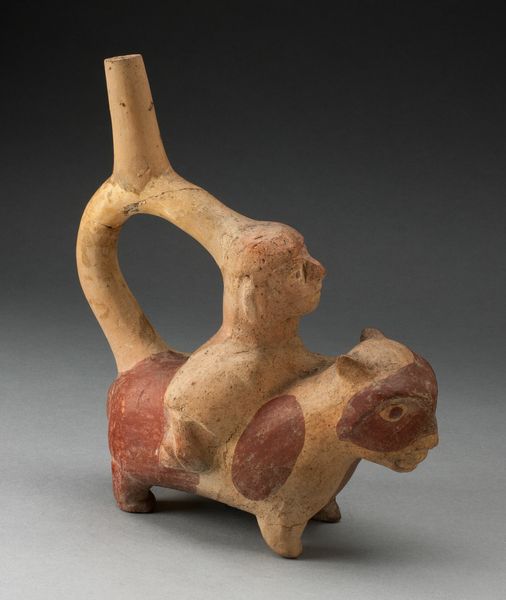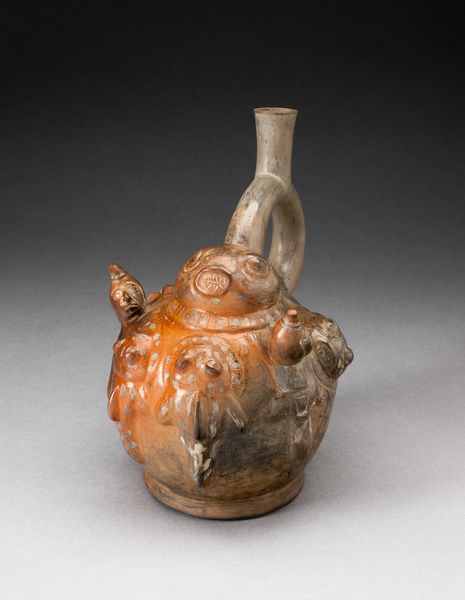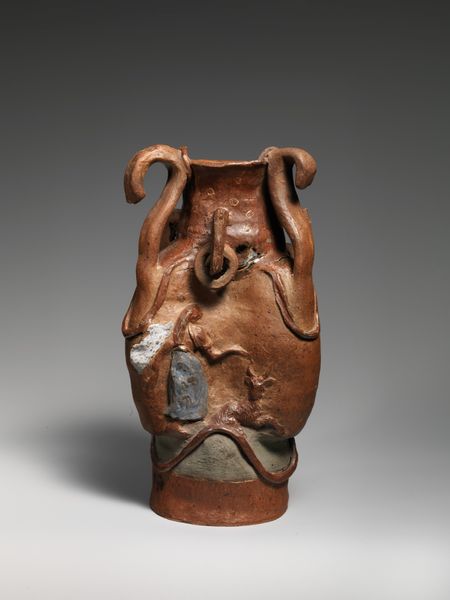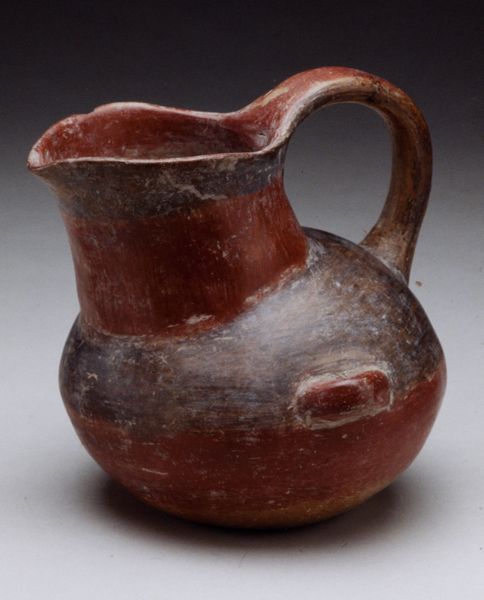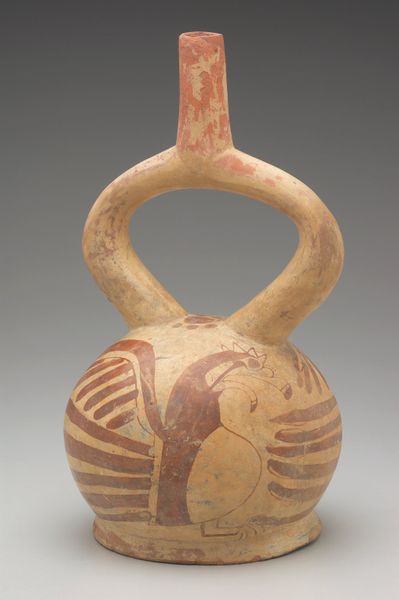
Handle Spout Vessel in Form of an Anthropomorphic Bird Grasping a Fish c. 100 - 500
0:00
0:00
ceramic
#
ceramic
#
figuration
#
indigenous-americas
Dimensions: H. 23.9 cm (9 3/8 in.)
Copyright: Public Domain
Curator: Look at this remarkable ceramic vessel from the Moche culture. It’s called "Handle Spout Vessel in Form of an Anthropomorphic Bird Grasping a Fish," dating roughly from 100 to 500 AD. It’s currently held here at the Art Institute of Chicago. Editor: My initial impression is how fiercely it depicts this bird of prey; you can see that he has his eye on his catch and its ready to protect. Curator: Precisely. Birds, especially raptors, carried significant weight in Moche iconography. They represented power, divinity, and were often linked to warrior status or shamanic practices. It grasps a fish that might be the Hallucinatory fish in its claws which are often displayed in vessels found during rituals or for shamanic uses.. Editor: I see. So, the bird isn't simply depicted in a naturalistic pose; it’s embodying a more significant symbolic narrative. Is this pairing—bird and fish—common? Curator: The bird-fish motif does recur in Moche art. Fish represents the depths of the sea, from where knowledge, and divinity emanated to some and therefore symbolizes water, sustenance, fertility, as it serves as an important source for living beings.. So the vessel becomes more than a utilitarian object; it transforms into a complex layered signifier within its worldview. Editor: And what about the vessel form itself? The stirrup spout is very distinctive and I'm curious if you have any details. Curator: The stirrup spout indeed is iconic of Moche ceramics. The double spout acts like a sort of pressure release or airlock; and this one also functions to allow a more careful controlled stream while pouring during rituals or simply serving liquids. Editor: So, this artwork invites considerations about social status, rituals, the natural world, and even beliefs—all through this singular ceramic form! Thank you. Curator: It underscores the ways that symbols can reflect the intricate dance between the tangible world and the spiritual one. These objects encourage us to interpret and discover the narratives of ancient culture, to explore the complex patterns, or sometimes chaotic symbols behind such intricate imagery.
Comments
No comments
Be the first to comment and join the conversation on the ultimate creative platform.
